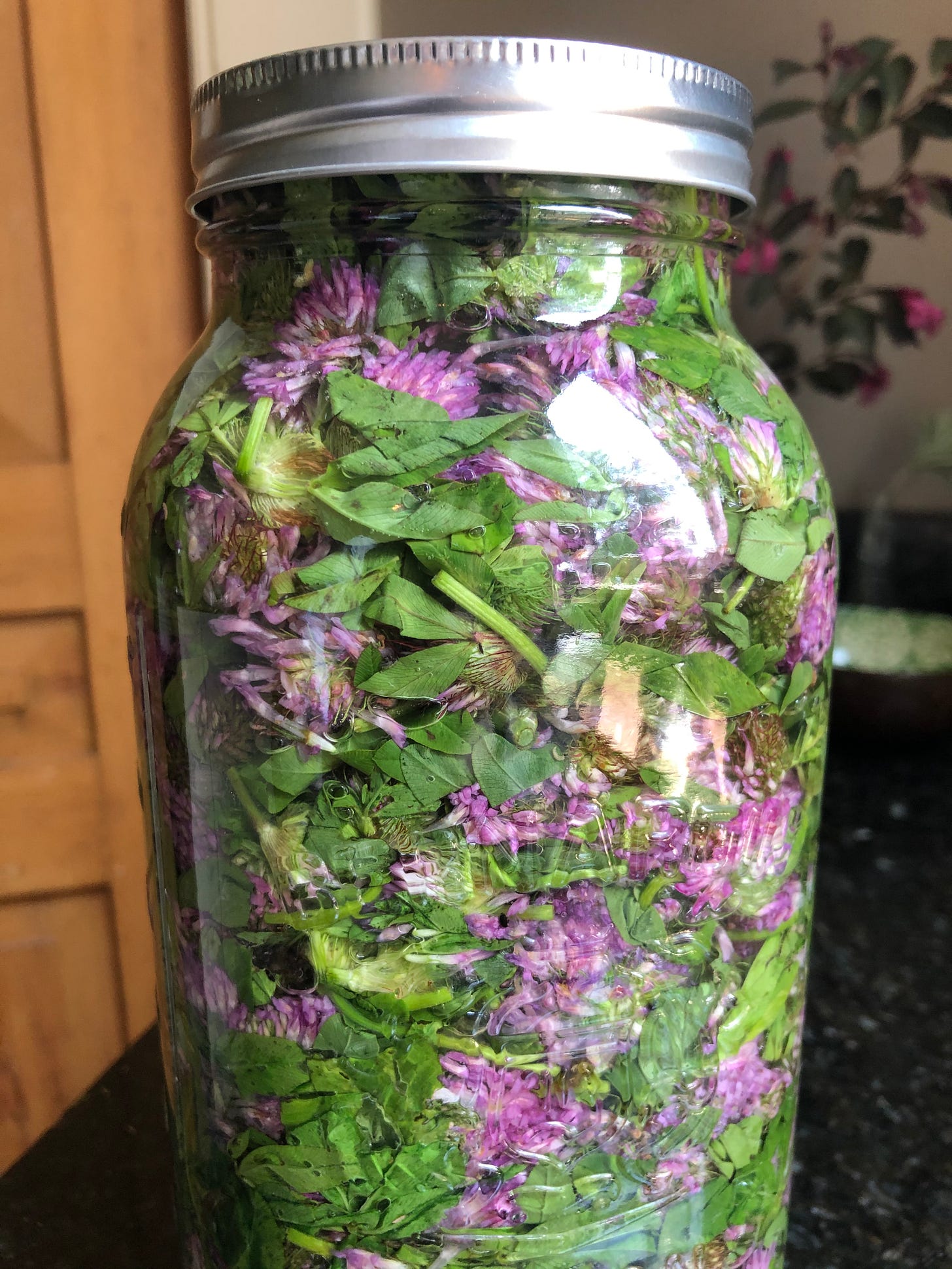Sweet, cool and moist, red clover is a gentle nourishing tonic that makes a great tasting tea. Being an excellent source of minerals, it is one of the best nutritive herbs, and is often used in nourishing herbal infusions.
Classified as an alterative and lymphatic herb, it helps the body gently eliminate waste materials, especially via the lymph channels and skin. Having an affinity for the lymphatic and glandular system it can be helpful to support the body when there is a tendency to swollen glands and congested lymphatic tissues.
Due to its alterative actions, it is also indicated in skin conditions including dry skin, eczema and other skin eruptions, especially in children. In that case it is commonly taken together with other alteratives such as burdock root.
Red clover supports women’s health. It has been used for infertility, menstrual problems including PMS. It benefits breast health, helping to alleviate the symptoms of premenstrual breast pain, and be supportive in cases of breast cysts. It has been traditionally used for cancers including breast and ovarian cancers where it walls off and contains the tumor to keep it from spreading.
It is widely used for its effect in supporting the transition to menopause, where its phytoestrogens ease hot flashes and support bone and cardiovascular health. It is one of my favourite herbs to use for this purpose as it has been shown to be so gentle and safe.
It is a lung expectorant and antispasmodic, being useful in dry spasmodic coughs and bronchitis. It has been traditionally used in whooping cough.
GROWING AND HARVESTING
While it is called red clover, the flowers are actually a purplish pink colour. There are numerous other clovers growing in this region, so make sure you identify the plant correctly. Other clovers are not interchangeable medicinally with this one.
Being a legume, it is used widely in agriculture as a cover crop to help fix nitrogen in the soil, draw up minerals and rebuild soil health. It is perennial and grows widely in this region, blooming first in June and then coming through with a second flush of blooms in late summer or early fall.
It’s hard to find good quality red clover on the market as much of it it browned and contains few blossoms. When picking red clover, pick the blossoms and top few leaves of the plant. Pick flowers that are in their prime - full in colour and not browning. Avoid picking from plants that show any sign of mold or mildew. There is some concern that fermentation of red clover may lead to the production of plant compounds that have an effect on blood thinning so when drying the blossoms for tea, spread them out in a single layer in a breezy warm dry place to speed drying and reducing browning and possible fermentation.
The flowering tops can also be made into a fresh tincture. The dried flowers are often used to make a nourishing infusion - where the tea is left to infuse overnight. In order to make the most potent tea, prepare the tea as a decoction. About a quarter cup of the dried flowering tops in a litre of water. Bring to a gentle simmer, covered, for 20 minutes. Remove from heat and allow to sit for another15-20 minutes. Strain and enjoy over the course of a day or two.





